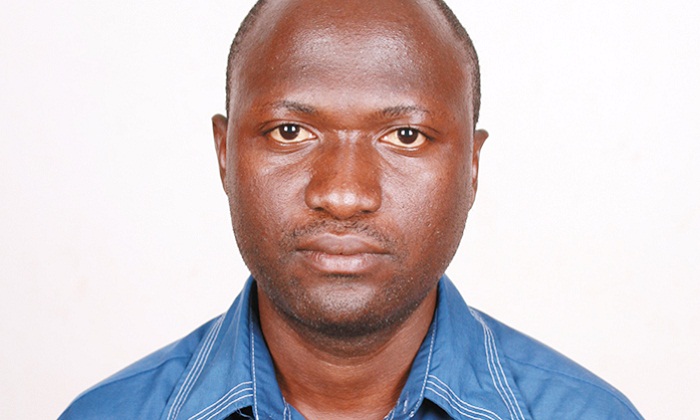The African continent generally lacks safe and clean water, yet the continent has an abundant source of water resources – it has lakes, rivers, streams, reserves, wells, wetlands and a lot of underground water resources.
The World Water Day 2018 theme is ‘Nature for Water’. It explores how we can use nature to overcome the water challenges in our midst and to ensure access to water for all. Climate change and its associated environmental challenges, is responsible for water-related crises we see around the world. Floods, drought and water pollution are all made worse by degraded vegetation, soil, rivers and lakes.
Our natural resources and ecosystems are of a paramount importance in providing us with reliable and sustainable natural sources of water to sustain our lives and livelihoods. When we neglect our ecosystems, we make it harder to provide everyone with the water we need to survive and thrive.
When we go a joint vision to protect and conserve forests, wetlands and water catchments, nature-based solutions have the potential to solve many of our water challenges. We need to improve our ‘green’ credentials and infrastructure as much as possible. Planting new forests, reconnecting rivers to floodplains and restoring wetlands will re-balance the water cycle and improve human health and livelihoods.
Yes, millions live without love, but no one has lived ably without water, without clean water – dirty water spreads disease and sick children are unable to attend classes. Clean water reduces childhood diseases, keeping children in classes instead of health clinics.
Without water, farmers are restricted to specific growing seasons and specific crops. This means less food for their communities and less of a chance for them to earn a living.
With access to clean water, farmers can grow a larger diversity of crops; grow during their normal off season; helping feed their communities year round and increasing their revenues. And in many areas, young girls and boys spend hours each day collecting water for their families. Providing a well at a school allows girls and boys to spend their time learning, instead of collecting water.
The African continent generally lacks safe and clean water, yet the continent has an abundant source of water resources – it has lakes, rivers, streams, reserves, wells, wetlands and a lot of underground water resources, on the top of being surrounded by oceans and seas. All these sources are supplemented by abundant rainfall, which can also be harvested to get enough water for domestic and industrial use, but the poor continent is suffering from the stress, disadvantage and vulnerability that come with the opposite.
Everyone needs water in sufficient quantity and portable quality to live a healthy life. The many uses of water agricultural, domestic, power generation, quenching thirst and leisure activities – are related to the economic, social mental and physical health of the world’s population.
Almost two billion people drink water you would not use to wash your car or clothes. Another 1.4 billion wish they had that water to drink. In many parts of the world, getting enough water to survive is a daily crisis. The magnet of attraction of people to water has no “like” and “unlike” poles – both sides attract each other as water moves on and on to everybody’s life to boost their capacity to enjoy the globe.
Waterwise, the world is now divided into three parts; sufficient, insufficient and polluted. WHO (2016) established that more than 2.2 billion people did not have enough clean water to meet their daily needs. Even more disturbing, 74% of all diseases and sickness in the developing world are related to water and inadequate sanitation.
According to the UN, an estimated 40 billion hours each year are spent collecting water in Africa alone. This is precious time that could instead be spent gaining an education, going to work, or even starting businesses. Access to clean water allows individuals to put their time and effort into realizing their dreams instead of simply surviving. Each new village drill and well ends the need to gather water and creates new jobs, adding economic sustainability. Moreover, unlike most human rights a litre of water enjoyed by one person cannot be consumed by anyone else!
For the last 20 years, millions of people have been working on and for water – tens of thousands of leading politicians, economists, scientists and representatives of the civil society, have been fighting for efficient management of water resources and to ensure that people have the “right” or unchecked access to it. Hundreds of programmes, projects and declarations have been approved, applied and implemented. Tens of billions of dollars, in addition to local expenditure have been allocated and invested. Yet despite all this, “a crisis is looming” and there is still a talk of the “Water bomb” about to explode!
We all need to go a joint vision to taking action to tackle the water crisis, in support of Sustainable Development Goal 6.3 on improving water quality and reducing, treating and reusing wastewater.
Today, there are over 663 million people living without a safe water supply close to home, spending countless hours queuing or trekking to distant sources, and coping with the health impacts of using contaminated water.
Globally, the vast majority of all the wastewater from our homes, cities, industry and agriculture flows back to nature without being treated or reused – polluting drinking and bathing and irrigation and losing valuable nutrients and other recoverable materials. Reducing and safely treating and reusing wastewater, for example, in agriculture and aquaculture, protects worker, farmers and consumers promotes food security, health and well-being.
Source: https://www.newvision.co.ug/new_vision/news/1473916/dynamics-water-lie-affordability-accessibility

